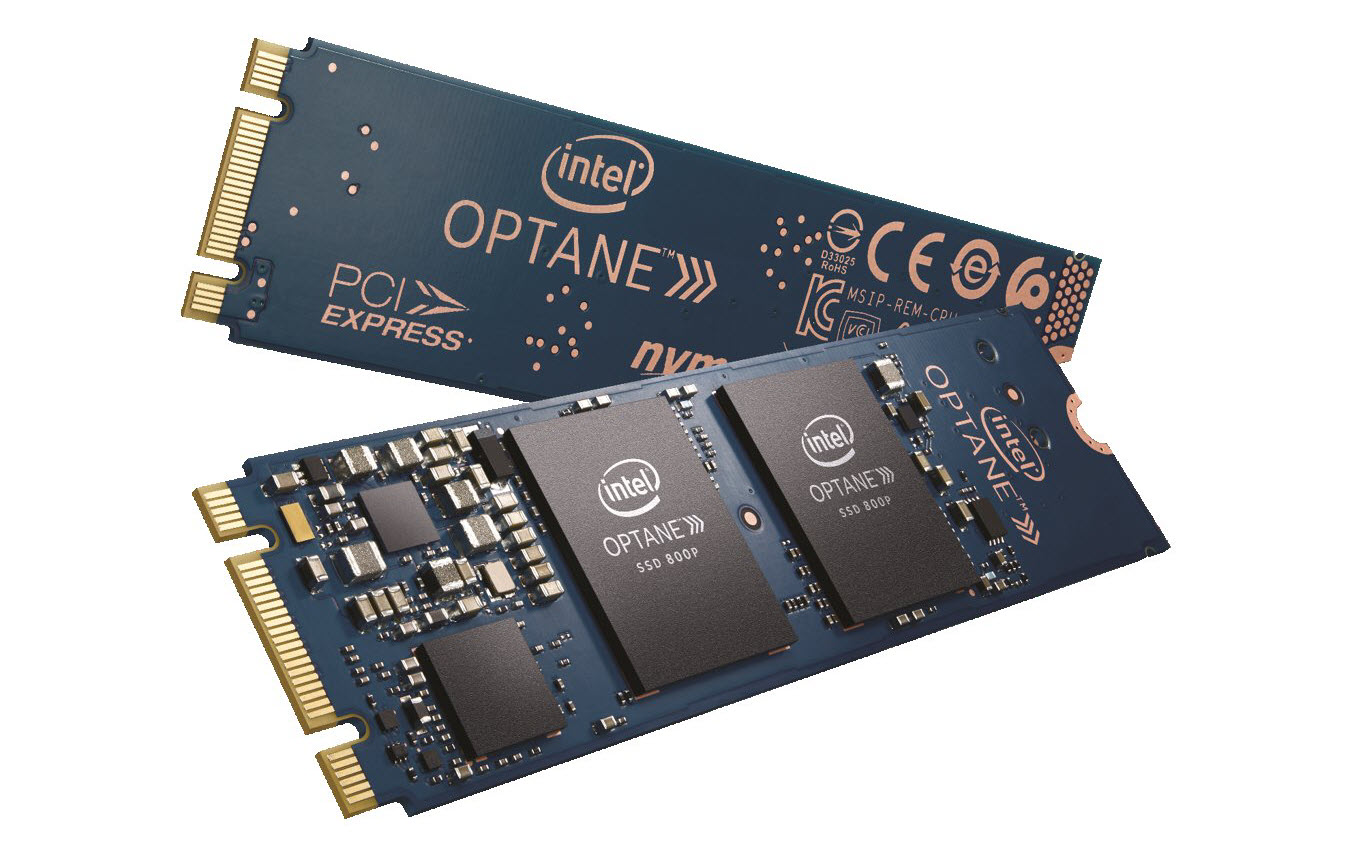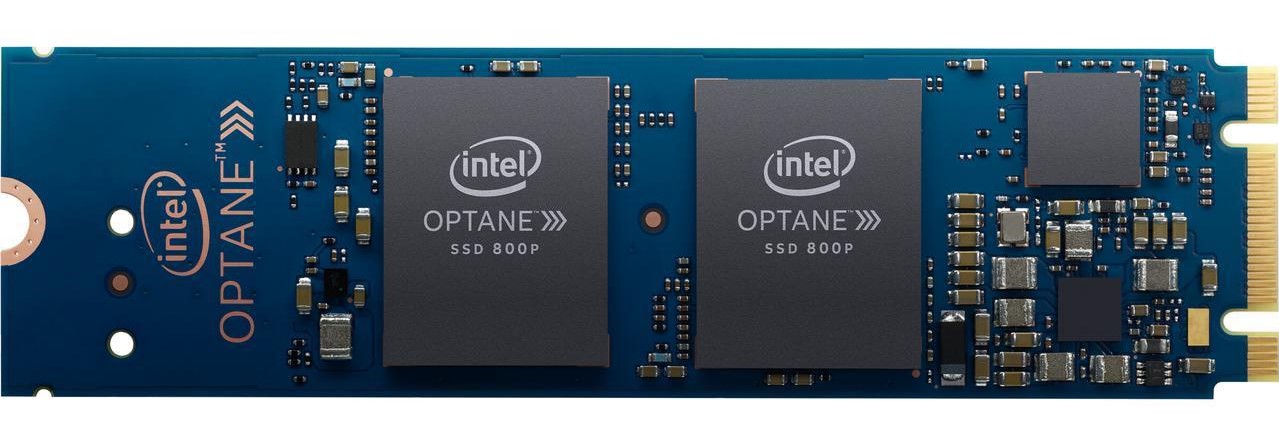Early Verdict
The Optane SSD 800P 58GB is the size of a good cache drive designed to be your primary storage. This is a great update for your system if you have an older PC with System Response Technology.
Pros
- +
Cache SSD with Optane Memory or third-party software
Cons
- -
Too small for most users
- -
No custom NVMe driver
- -
Weak performance
Why you can trust Tom's Hardware
Features & Specifications
Intel's 800P is the first bootable Optane SSD in the M.2 form factor, so now you can install a small SSD that should deliver big performance.
Intel's first true consumer-focused Optane-powered SSD is plug-and-play and works as a standard boot drive. Intel designed the Optane SSD 800P for users with a small local storage footprint backed by either the cloud or secondary storage for bulk storage, so it only comes in 58GB and 118GB capacities. Like all of Intel's Optane SSDs, the 800P uses 3D XPoint memory, which means it's much faster than normal flash-based SSDs. To fully understand the 800P, though, we have to examine the two existing Optane products.
Intel's Optane Memory came to market first. It is a cache drive that sits in front of a slower primary storage device, like an HDD. The drive ships in 16GB ($36.99) and 32GB ($56.99) capacities and caches frequently-used data on the high-speed device, which then speeds up applications. Optane Memory comes with several hardware requirements that limit it to newer platforms like the Z270 and X299 chipsets.
The Optane SSD 900P is designed for the prosumer/workstation market and comes in 280GB ($388) and 480GB ($599.99) capacities. This drive works like a standard storage device without any chipset stipulations, but it's expensive and only works in a PCIe slot (or U.2). The design mirrors Intel's enterprise Optane DC P4800X, just with different capacities and some omitted server-specific functionality.
The Optane SSD 800P borrows a little from both existing products. You get the system-agnostic functionality from the 900P, but it comes in the versatile M.2 form factor like Optane Memory. The 800P's performance sits somewhere in the middle, and so does the price.
The Optane drives use 3D XPoint, which is Intel and Micron's super-fast storage memory. Optane technology is similar to the first SSDs that came to market with single-level cell (SLC) NAND. Back then, SLC SSDs were radically faster than disks, much like Optane is much faster than flash, but SLC was expensive and came in low capacities. Optane technology is similar; it's expensive and less dense than the previous-generation technology. That should improve as the technology matures, but for now, you're going to pay a premium and capacity is limited.
Since SSDs debuted, the manufacturers have marketed high queue depth performance. But marketing consumer SSDs like the drives used in database servers leaves shoppers with a false sense of what really matters. It's like marketing the towing capacity of a Prius instead of listing its fuel efficiency. In contrast, Intel markets the Optane SSD 800P's low-queue depth performance. That's because Intel designed Optane to deliver its high performance at real-world queue depths, and that's performance that matters.
Get Tom's Hardware's best news and in-depth reviews, straight to your inbox.
Specifications
The Intel Optane SSD 800P comes to market in 58GB and 118GB capacities, but bigger models should come in the future. These capacities are laughable for most of our readers, but the 800Ps are actually larger than the 32GB Optane Memory caching drives.
Intel claims the new Optane SSD 800P series is capable of up to 1,450/640 MB/s of sequential read/write throughput. Random performance reaches up to 250,000 read and 140,000 write IOPS. Intel's documentation only lists performance at QD4, and not above, and that's important because performance at low queue depths is the main attraction for this new type of storage device.
The Optane SSD 800P doesn't use a DRAM buffer to cache the LBA map, which reduces component costs. The underlying 3D XPoint memory is fast enough to hold the information, and it's non-volatile, so it doesn't lose data when power is removed.
The SSD communicates via the NVMe protocol over a PCIe 3.0 x2 interface, but most PCIe SSDs support a x4 connection. In some systems, a x2 connection can reduce power consumption by turning off the extra two lanes. 3D XPoint memory uses more power than flash, so the extra power savings helps in some cases, like notebooks.
Features
3D XPoint is a write-in-place memory, so it doesn't have to use the same read, modify, write cycle like normal flash-based SSDs. That means performance doesn't degrade due to dirty cells, so you'll get the same performance regardless of the previous workload. In our testing, we've also noticed that Optane devices don't lose performance based on the amount of data you store on the drive. Most flash-based SSDs slow down once you fill the drive more than halfway, and performance continues to decline as you add more data. With Optane, all of the old rules go out the window. It offers the same performance regardless of how full the drive is or how long you have used it.
3D XPoint is also more durable than flash, so the drives have more endurance. The drives also offer unmatched performance at low queue depths, especially with random read workloads. That enhances the user experience by accelerating system responsiveness.
We discovered an interesting, but unsupported, feature. We were able to use an 800P as a caching device with the Optane Memory software on our Z270 system. We're not sure if Intel intended to leave this undocumented feature open, or if the 800P's device ID is just close enough to Optane Memory for it to work. Currently, the Optane SSD 800P will work as an Intel Optane Memory caching drive, which is nice if you're searching for a bulkier cache drive.
Pricing, Warranty & Endurance
Intel never claimed Optane would be a low-cost affair, at least until the memory matures. The 58GB model retails for $129, and the 118GB Optane SSD weighs in at $199. The 118GB drive has a 365 TBW (Terabytes Written) rating, and that drops to 181 TBW for the 58GB drive. As a general rule of thumb, the drives support up to 200GB of data writes per day over the five-year warranty period.
Packaging
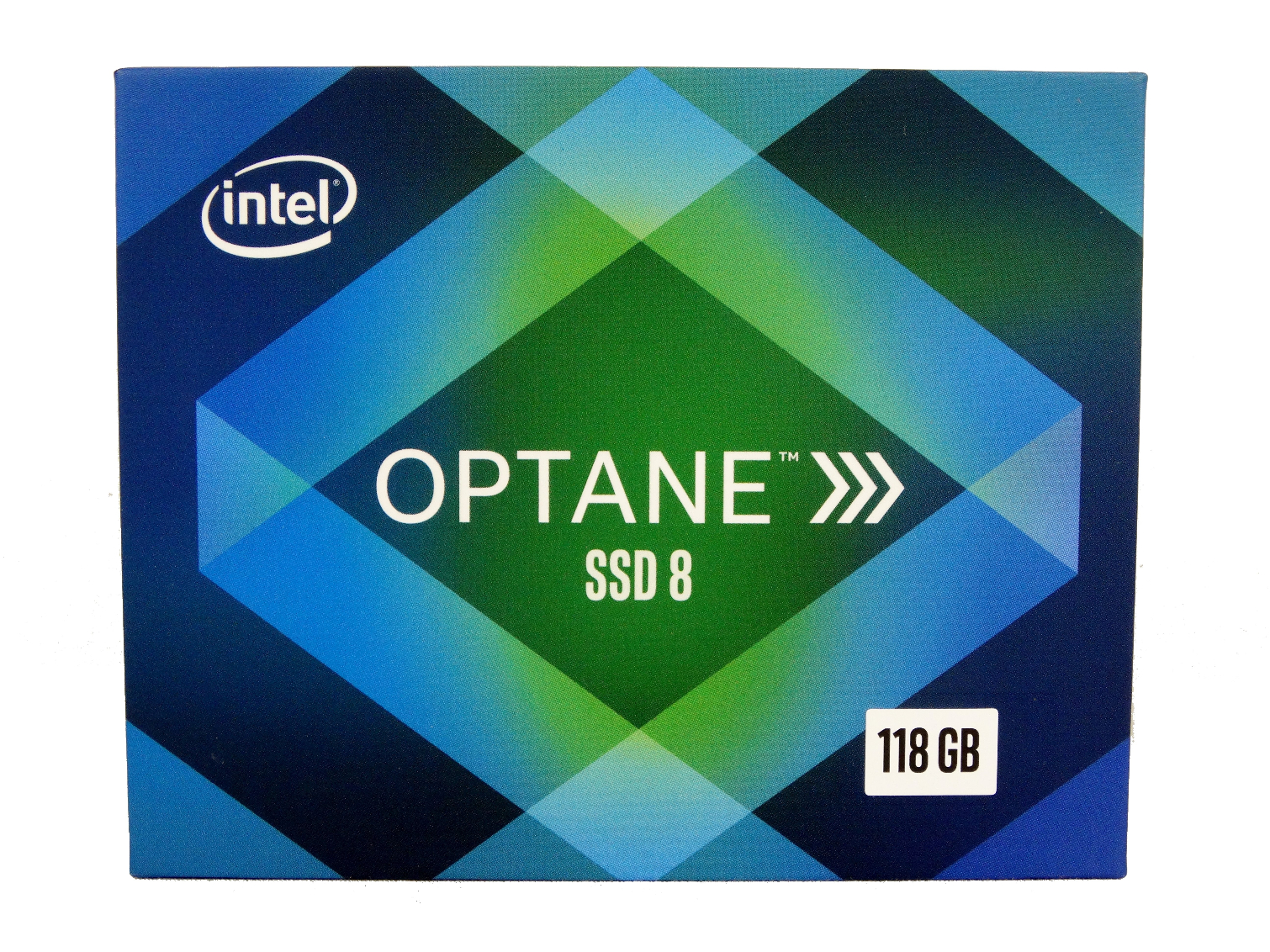
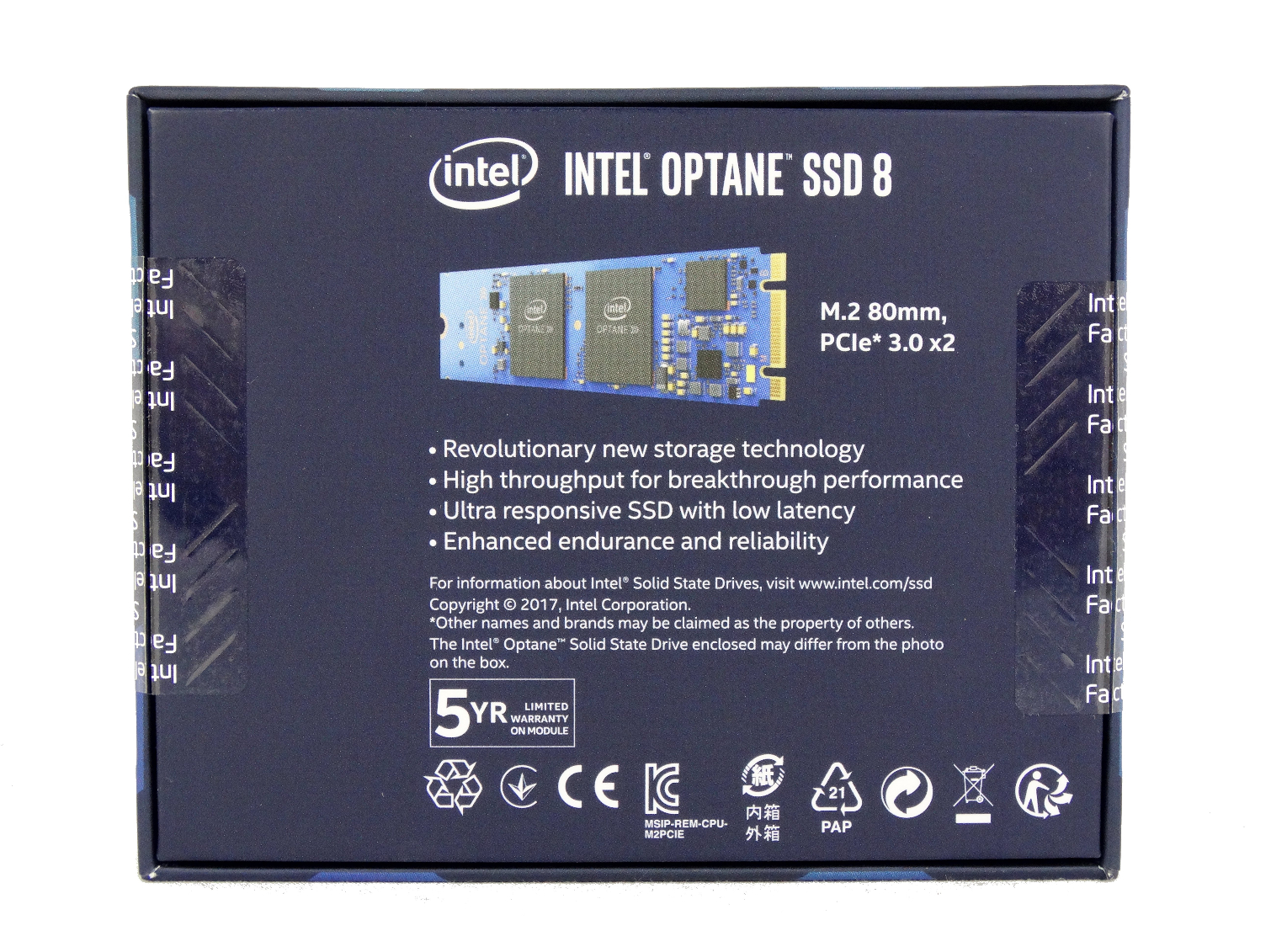

The 800P's retail package looks like Optane Memory's package. Intel covers the key features on the back, but it doesn't list any performance details that would help retail shoppers compare the specifications to other products.
A Closer Look

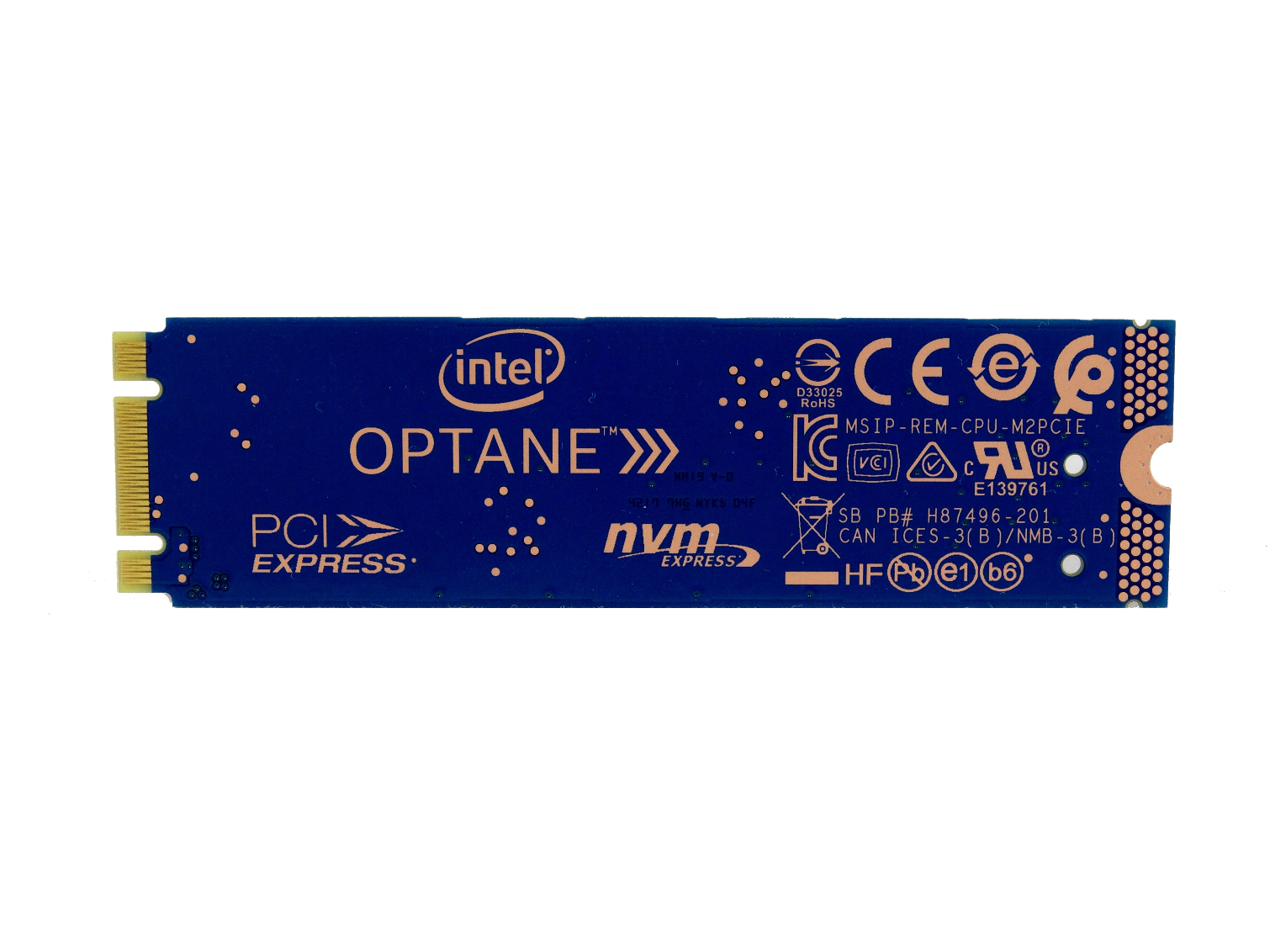

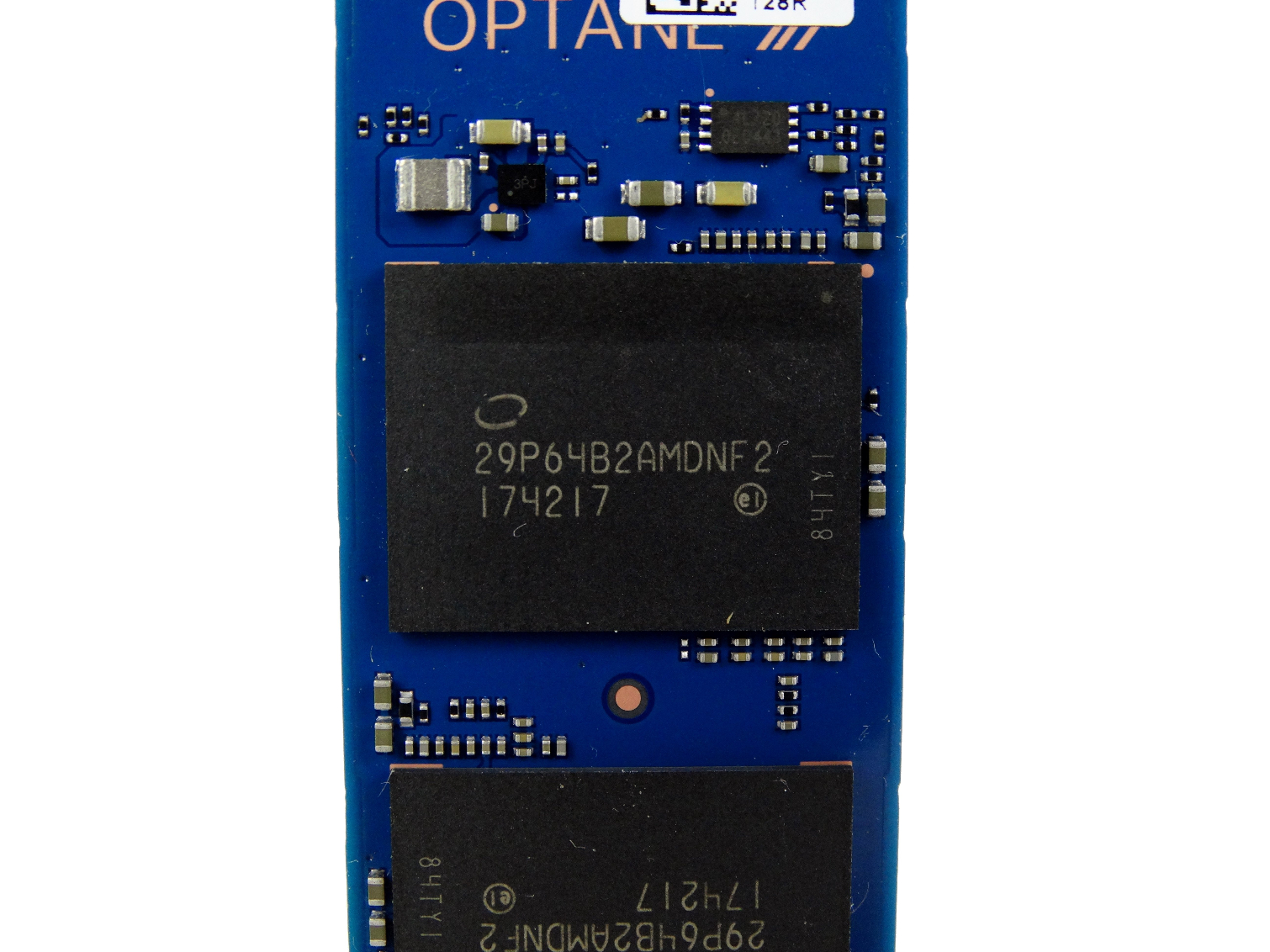
Intel uses a proprietary controller on the Optane SSD 800P that was likely designed by the Altera team that Intel acquired. Intel hasn't been very forthcoming about the architecture other than listing the obvious PCIe 3.0 x2 bus specification.
Both capacities use two Optane packages on a single-sided design to increase compatibility with notebooks and other small enclosures. The back of the drive has to be the best looking of any SSD we've ever tested. We want to mount it upside down in a system with a see-through side panel.
MORE: Best SSDs
MORE: How We Test HDDs And SSDs
MORE: All SSD Content

Chris Ramseyer was a senior contributing editor for Tom's Hardware. He tested and reviewed consumer storage.
-
derekullo Does Smart Response still have the 64 gigabyte limit on the maximum size of the cache?Reply -
CRamseyer Yes but when configured as Optane Memory it seems to take the entire drive for cache.Reply -
2Be_or_Not2Be I would have liked to see the 900p performance included in the graphs. Then you could tell how much "performance" you're losing by going down to the 800p.Reply -
CRamseyer That's why we have the performance charts on the final page. We wanted to get in the 900P and Optane Memory charted but didn't want to make all Optane results in the main testing portion of the review. You will see 800P, 900P VROC, and PCH RAID coming up soon together in a review.Reply -
TomHaX Fast? Intel claims the new Optane SSD 800P series is capable of up to 1,450/640 MB/s of sequential read/write throughput. Random performance reaches up to 250,000 read and 140,000 write IOPS.Reply
That is SLOW. Compare to gold standard: Samsung 960 Pro 2TB:
Sequential Read Speed: 3,500 MB/sec
Sequential Write Speed: Max 2,100 MB/sec
RANDOM READ (4KB, QD32): 440,000 IOPS (Thread 4)
RANDOM WRITE (4KB, QD32): 360,000 IOPS (Thread 4)
http://www.samsung.com/semiconductor/minisite/ssd/product/consumer/960pro
Stop FUD. Get the facts! -
natx808 price/performance is not doing it for me. I'd take a cheap adata XPG SX8000 256 GB instead.Reply
i'm not sure what consumer application would suits these drives for considering such small density. not much room left for games once you install the OS on a 64 or even 128GB drive
disappointing 4k random write performance compared to drives that cost a fraction of the optane drives. I suppose the average consumer isn't going to be running a heavily loaded database server, but regardless i would just as soon opt for nvme drives than optane.
Question - whats the purpose to show 4 R0 optane if you don't compare it to 4 R0 SSDs?
-
DavidC1 To Chris, the author:Reply
You guys should update your SSD articles to include 760p in the comparison. It's the top drive when it comes to battery life, and power restricted performance, which is a nice balance for notebooks. -
TikoL Intel inside, Idiot outside. Only an idiot will buy this product vs. Samsung 960 pro SSD.Reply -
rilebru Once I watched a documentary in which a whale washed ashore exploded like a water fountain spraying blood and all other disgusting bodily fluids. This is because it was bloated. How come I don’t see that whale on packaging of Optane products now?Reply
